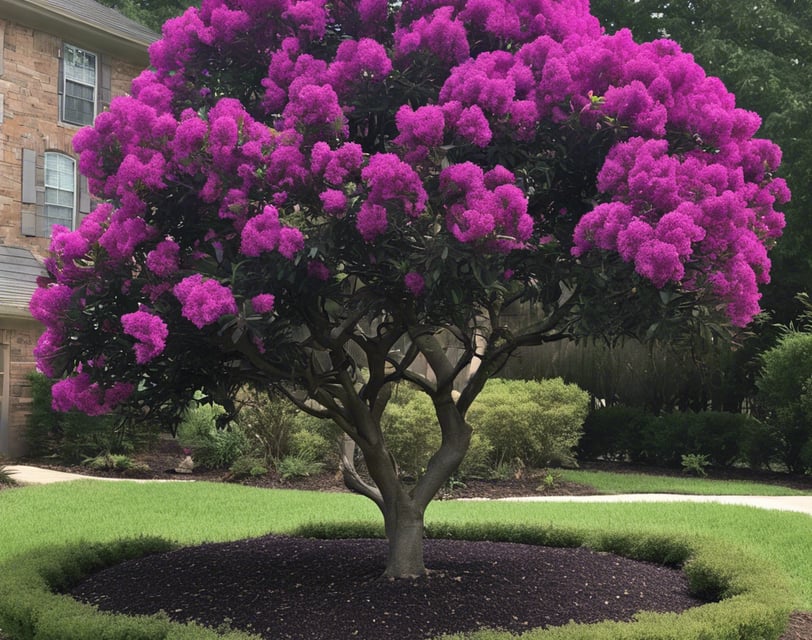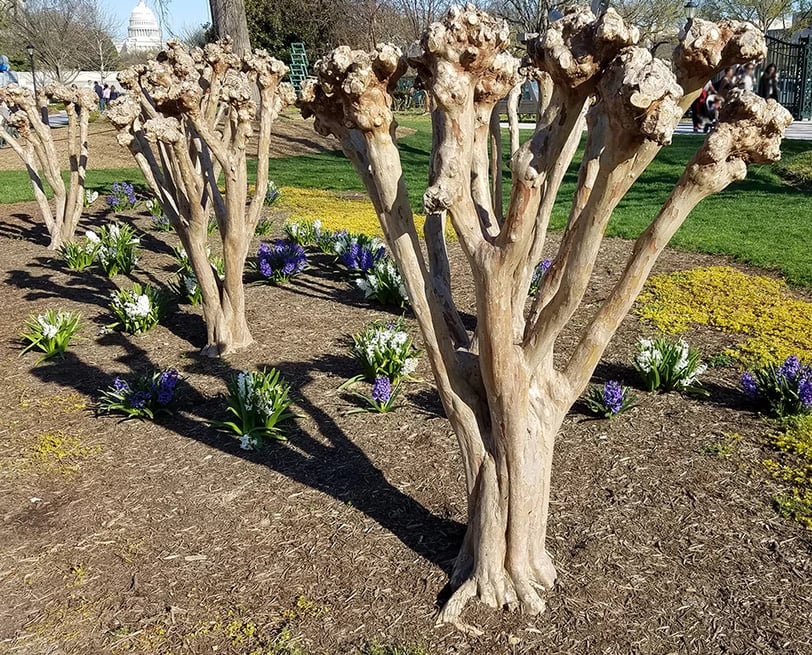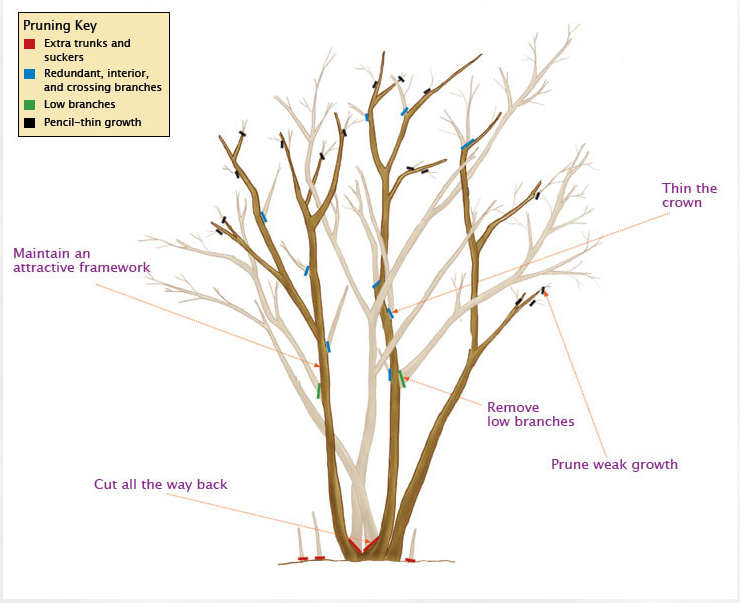The Dangers of Crepe Murder: Why Improper Pruning is Harmful for Crepe Myrtles
The proper practice of pruning crepe myrtles and why it is harmful to over prune them.


Introduction
Crepe myrtles, also known as Lagerstroemia, are beloved flowering trees that add beauty and charm to landscapes across the world. With their vibrant blooms and attractive bark, these trees are a sight to behold. However, there is a harmful practice known as "crepe murder" that threatens the health and beauty of these majestic trees. In this article, we will explore what crepe murder is, why it is detrimental to crepe myrtles, and the importance of proper pruning techniques for maintaining healthy trees.
Understanding Crepe Murder
Crepe murder refers to the improper and excessive pruning of crepe myrtles, often resulting in the tree being cut back to unsightly stubs. This practice involves severe topping, where large branches are indiscriminately removed, leaving behind disfigured and weakened trees. While some may mistakenly believe that this drastic pruning promotes better flowering, it is, in fact, detrimental to the overall health and aesthetics of the crepe myrtle.
The Dangers of Crepe Murder
1. Weakness and Vulnerability: When crepe myrtles are subjected to crepe murder, their natural structure and form are compromised. The excessive removal of branches disrupts the tree's ability to develop a strong and balanced framework. As a result, the tree becomes weak and more susceptible to damage from wind, storms, and disease.
2. Reduced Blooming: Contrary to popular belief, crepe murder does not enhance flowering. Instead, it diminishes the tree's ability to produce an abundance of blooms. By removing significant portions of the tree, the energy reserves needed for flower production are depleted, resulting in fewer and smaller blooms.
3. Unsightly Appearance: Crepe Myrtles are known for their graceful and multi-stemmed growth habit, which adds beauty and character to any landscape. However, crepe murder disrupts this natural growth pattern, leaving behind unsightly stubs and a disfigured tree. Rather than enhancing the tree's appearance, this practice detracts from its overall aesthetic appeal.
The Importance of Proper Pruning
Proper pruning is essential for maintaining the health and beauty of crepe myrtles. By following these guidelines, you can ensure the longevity and vitality of your trees:
1. Selective Pruning:
Instead of indiscriminately removing branches, selectively prune crepe myrtles to remove any dead, diseased, or crossing branches. This approach helps maintain the tree's natural form and promotes healthy growth.
2. Prune in Late Winter or Early Spring:
Timing is crucial when it comes to pruning crepe myrtles. It is best to prune these trees during late winter or early spring, before new growth begins. This allows the tree to heal properly and minimizes the risk of disease or pest infestation.
3. Avoid Topping:
One of the most important rules of pruning crepe myrtles is to avoid topping or severe cutting back. Instead, focus on thinning out the canopy and removing any unnecessary growth. This method helps maintain the natural shape and structure of the tree.
4. Regular Maintenance:
Regular maintenance, such as removing suckers and water sprouts, is essential for the health of crepe myrtles. These unwanted growths divert energy from the main tree and can lead to a weakened structure.
Conclusion
Crepe murder is a harmful practice that should be avoided at all costs. By understanding the dangers associated with improper pruning and following the guidelines for proper care, we can ensure that our crepe myrtles remain healthy, vibrant, and a source of beauty in our landscapes. Let us appreciate and preserve these magnificent trees by treating them with the care and respect they deserve.




